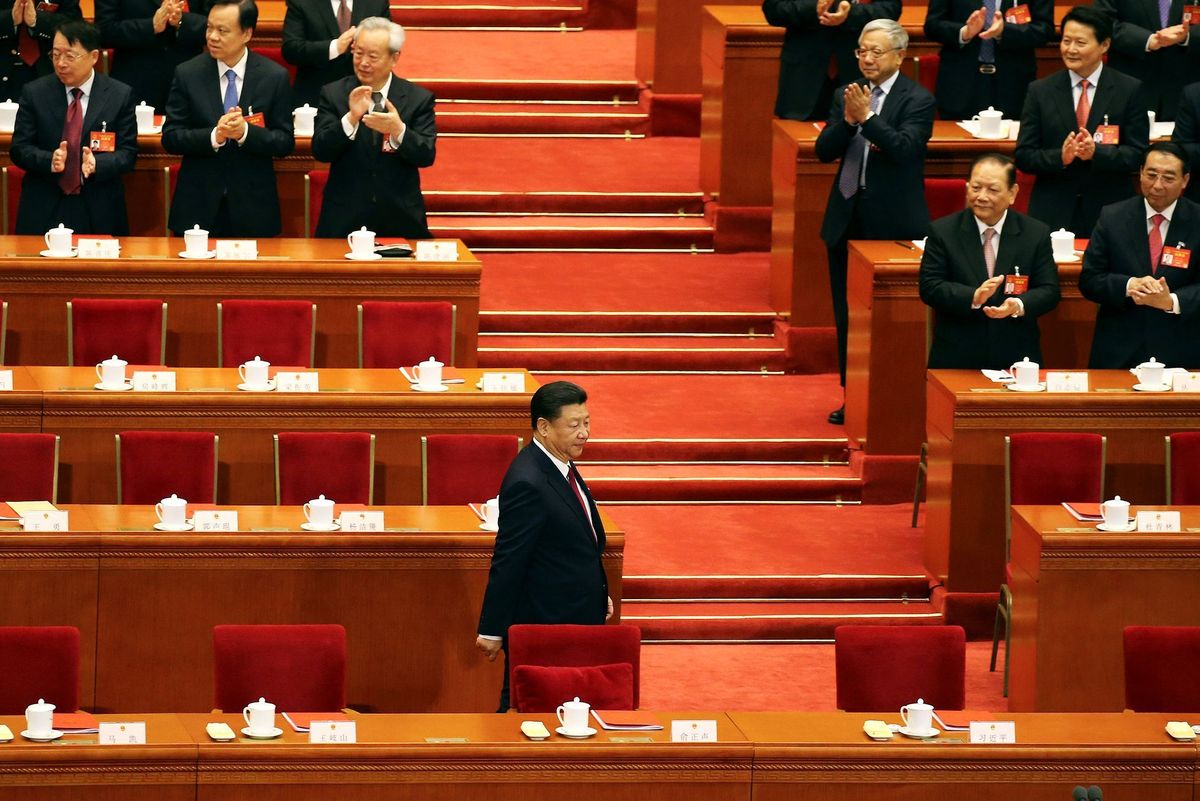Will China’s growth plan put it ahead of the US?

A few minutes every morning is all you need.
Stay up to date on the world's Headlines and Human Stories. It's fun, it's factual, it's fluff-free.
Though China’s economy has long been expected to grow to be larger than that of the US, China remains far behind in terms of the average wealth of its citizens.
While the United States was gearing up for what proved to be a hotly contested presidential election, China was already laying out its future economic plans.
Released in late October, China’s next five-year plan stresses the need for the country to pursue quality growth and increase its own domestic market, with a special focus on charging up the country as a technological powerhouse to rival the US.
Particularly in terms of technology, US-led sanctions have served to create the impetus for China to move toward technological self-reliance.
China has emerged from the coronavirus pandemic as possibly the best off, as it is one of the few countries expected to grow its economy in 2020. This perhaps gives the country the space to accelerate its economic and technological growth.
But whether this growth can overtake that of the US is another question. Though China’s economy has long been expected to grow to be larger than that of the US, China remains far behind in terms of the average wealth of its citizens.
The uncertainty and chaos facing Chinese corporations targeted by US sanctions and the deterioration of US-China relations show that China has a long and uneasy path before it can truly claim to be self-reliant.
China’s plans come at a time when the future of US-China relations appears uncertain, with outgoing President Donald Trump using his final weeks in office to deteriorate them further. For China’s leaders, there is no time like the present to lay down their path to overtaking the US.
Growth plan
China’s new five-year plan for economic growth, announced in October, is the country’s 14th, with the first having been announced back in the 1950s.
The latest plan stresses the need for sustainable growth with a focus on building up a robust domestic Chinese market.
The plan also centers China’s technological ambitions, likely in light of recent pressure from the US in the form of sanctions placed on crucial semiconductor technology.
One communiqué announcing the plan was published by the state-media run Xinhua News Agency, which stated that by “making major breakthroughs in core technologies in key areas, China will become a global leader in innovation.”
The five-year plan also briefly sketched out goals for the next fifteen years as well. These included raising China’s gross domestic product (GDP) per capita to that of a “moderately developed country,” further opening the economy, developing a “world-class military” by 2049 and cutting its carbon emissions.
Chinese officials and policymakers likely believe that this is the country’s moment to overtake the US in key areas, given the economic fallout and continued surge in coronavirus cases seen in the US.
Not only has China managed to recover from the pandemic, but in the third quarter of 2020 it enjoyed a GDP growth rate of 4.9%. According to the International Monetary Fund (IMF), China’s GDP has grown by nearly 2% over 2020.
Though this is significantly lower than the figures the country has seen in recent years, China is likely to be the only G-20 nation to grow its economy in 2020, experiencing a true “V-shaped recovery” following the fallout from COVID-19.
While China’s five-year plan did not suggest an annual GDP growth target, recent reports suggest that the country will aim for GDP growth of around 5% annually as a result of President Xi Jinping’s focus on “quality” growth over “quick” growth.
Though smaller than the number seen before the pandemic, 5% annual GDP growth is still enough to place China on track to overtake the US economy in size by 2031.
Overtaking?
That China’s economy will become larger than that of the US is essentially a foregone conclusion, though China still has a long way to go before it will overtake the US in every area.
China’s plans for future economic growth also need to account for the fact that returns on its investments have been gradually decreasing. According to Foreign Policy, returns on Chinese investments in its economy are half of what they were a decade ago. This essentially means that more money is producing less growth.
In terms of its GDP per capita, equivalent to the average wealth of its citizens, China lags far behind not just the US, but much of the world. China’s GDP per capita stands at US$10,261 compared to a vastly larger US$65,297 for the US.
China’s figure is also behind the world average GDP per capita of US$11,441, a testament to the vast ground that China’s economic growth still needs to cover.
A report by the Development Research Center of the State Council – a Beijing-based government think tank – also reported in September that it expected China’s per capita GDP to rise to US$14,000 by 2024. If this pattern holds, China’s economy would be larger than the European Union’s in 2027 and larger than that of the US in 2032.
Likewise, according to economists at the Australia and New Zealand Banking Group, one reasonable expectation would be for China to “reach GDP per capita levels similar to that of South Korea, Israel, or Spain over the next 15 years,” but this would still place China’s GDP per capita far behind that of the US.
But just as GDP is not the sole indicator of economic strength, neither is GDP per capita. In other crucial areas, China’s economy and technological prowess is gaining on that of the US.
In the field of Artificial Intelligence (AI), one of the key emerging technologies of the future, a report by US policy think tank Rand Corporation argued that although the US has a “modest” lead in this sector, Beijing’s continued focus on AI innovation means that China has substantially lowered the gap, which left “no room for complacency” on the part of the US.
This closing gap likely serves to explain the escalating US pressure on China’s access to semiconductor technology, which is crucial not just in most modern devices, but for emerging technologies as well.
Other US-based groups have issued similar warnings of China’s growing economic and technological strength.
In its annual report on relations between the two countries, the US-China Economic and Security Review Commission argued that “China is poised to overtake the United States in key economic and security areas, a development that could forever change the dynamic between the world’s two premier powers.”
Though China’s long-held ambition has been to match the US, according to Carolyn Bartholomew, vice-chair to the US-China Commission, “China has turned its focus toward surpassing the United States.”
In particular, the report warned, China is attempting to “revise the international order, and place itself at the top of a new global hierarchy.” This has become especially evident given the withdrawal of the US from many international agreements and trading arrangements.
Though experts, both American and Chinese, see growth in China’s future, it is the extent of this growth that truly matters.
China’s economy will likely grow to be larger than that of the US, but with a population of 1.4 billion people to the US’ 330 million, that is to be expected.
In crucial areas that China’s new five-year plan has pinned its future hopes on, such as semiconductor technology, China’s own domestic industry has been wracked by US-sanctions and instability, which has even led prominent chipmakers to default on their bonds.
Despite the uncertainty, China’s leaders are not waiting around. In the midst of sanctions and economic pressure, China has forged ahead with new economic plans and joined in new international trade blocs that exclude the US.
As the coronavirus pandemic and its subsequent economic turmoil continues to afflict the US, China has begun making preparations for a new round of post-COVID economic growth.
It is the response of the US and the incoming administration of President-elect Joe Biden that will ultimately dictate whether China’s new plan ensures that it will overtake the US or not.
Have a tip or story? Get in touch with our reporters at tips@themilsource.com




Comments ()